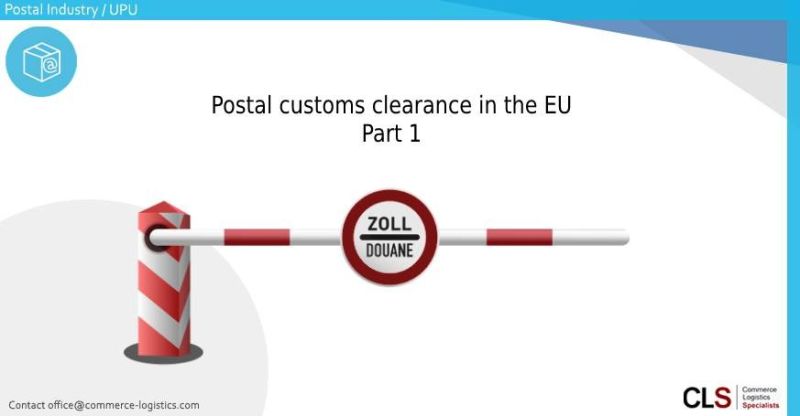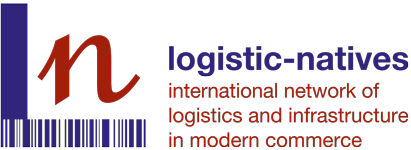
Explained simply by CLS: Postal customs clearance in the EU (Part 1)
𝗧𝗵𝗲 #𝗘𝗨 𝗩𝗔𝗧 𝗘𝗰𝗼𝗺𝗺𝗲𝗿𝗰𝗲 𝗣𝗮𝗰𝗸𝗮𝗴𝗲 (𝟭 𝗝𝘂𝗹𝘆 𝟮𝟬𝟮𝟭) 𝗵𝗮𝘀 𝗰𝗵𝗮𝗻𝗴𝗲𝗱 𝗯𝗼𝘁𝗵 𝗵𝗼𝘄 #𝗩𝗔𝗧 𝗶𝘀 𝗽𝗮𝗶𝗱 𝗮𝗻𝗱 𝘀𝗲𝘁𝘁𝗹𝗲𝗱 𝘄𝗶𝘁𝗵 𝘁𝗵𝗲 #𝘁𝗮𝘅 𝗮𝘂𝘁𝗵𝗼𝗿𝗶𝘁𝗶𝗲𝘀, 𝗮𝗻𝗱 #𝗰𝘂𝘀𝘁𝗼𝗺𝘀𝗰𝗹𝗲𝗮𝗿𝗮𝗻𝗰𝗲 𝗽𝗿𝗼𝗰𝗲𝗱𝘂𝗿𝗲𝘀 𝗶𝗻 𝘁𝗵𝗲 𝗘𝗨.
Most #ecommerce items are still delivered by designated #postaloperators (DOs), the #delivery #serviceprovider in the country of #destination tasked by the #UPU member country with fulfilling the universal #postalservice obligation as enshrined in the convention and acts of the Universal Postal Union (UPU).
𝗪𝗵𝗮𝘁 𝗶𝘀 𝘁𝗵𝗲 𝗽𝗿𝗶𝗻𝗰𝗶𝗽𝗹𝗲 𝗼𝗳 „𝗽𝗼𝘀𝘁𝗮𝗹 𝗰𝗹𝗲𝗮𝗿𝗮𝗻𝗰𝗲“ 𝗮𝗻𝗱 𝘄𝗵𝗲𝗻 𝗶𝘀 𝗶𝘁 𝗽𝗲𝗿𝗺𝗶𝘁𝘁𝗲𝗱?
In each UPU member country, only the #DO is entitled to conduct „postal customs clearance“. #International treaties ratified by all UPU member #countries regulate postal customs clearance #procedures worldwide, and these, in turn, are reflected in #national #customs laws.
According to the UPU #convention and treaties:
– Items for postal customs clearance must be sent using the UPU’s IT system and applicable UPU #standards (e.g.: postal #transport ID S10, postal customs forms CN22 or CN23 are mandatory when sending goods/merchandise).
– Electronic Advanced Data (#EAD) at postal item level must be sent in advance by the #DO in the country of origin to the DO in the country of #destination.
– The DO in the country of destination is responsible and obliged to conduct #import #customsclearance. This is non-negotiable and mandatory worldwide.
– This principle only applies to #shipments exchanged across borders between DOs. The DO in the destination country may charge a customs clearance #fee which is published and whose #application must be non-discriminatory.
𝗪𝗵𝗮𝘁 𝗮𝗿𝗲 𝘁𝗵𝗲 𝗰𝗼𝗺𝗽𝗲𝘁𝗶𝘁𝗶𝘃𝗲 𝗮𝗱𝘃𝗮𝗻𝘁𝗮𝗴𝗲𝘀 𝗼𝗳 𝗽𝗼𝘀𝘁𝗮𝗹 𝗰𝘂𝘀𝘁𝗼𝗺𝘀 𝗰𝗹𝗲𝗮𝗿𝗮𝗻𝗰𝗲?
Prior to 1 July 2021, postal customs clearance to the #EU was unrivaled in terms of #price and #simplicity. DOs were the only #operators permitted to clear customs based purely on postal paper forms (physical CN22/CN23 form attached to the shipment). As shipments with a #value below EUR 22 were exempt from customs #duty and #VAT, postal customs clearance for these shipments could be offered practically #free of #charge.
Consequently, there were effectively two separate #ecommerce customs worlds – low-cost, simplified and mostly paper-based #postal customs clearance, and „full“ #digital customs clearance for everyone else.
This all changed dramatically on 1 July 2021.
(𝘛𝘰 𝘣𝘦 𝘤𝘰𝘯𝘵𝘪𝘯𝘶𝘦𝘥)
Click here for the LinkedIn-Article an d join the discussion

Walter Trezek
Document Exchange Network GmbH

